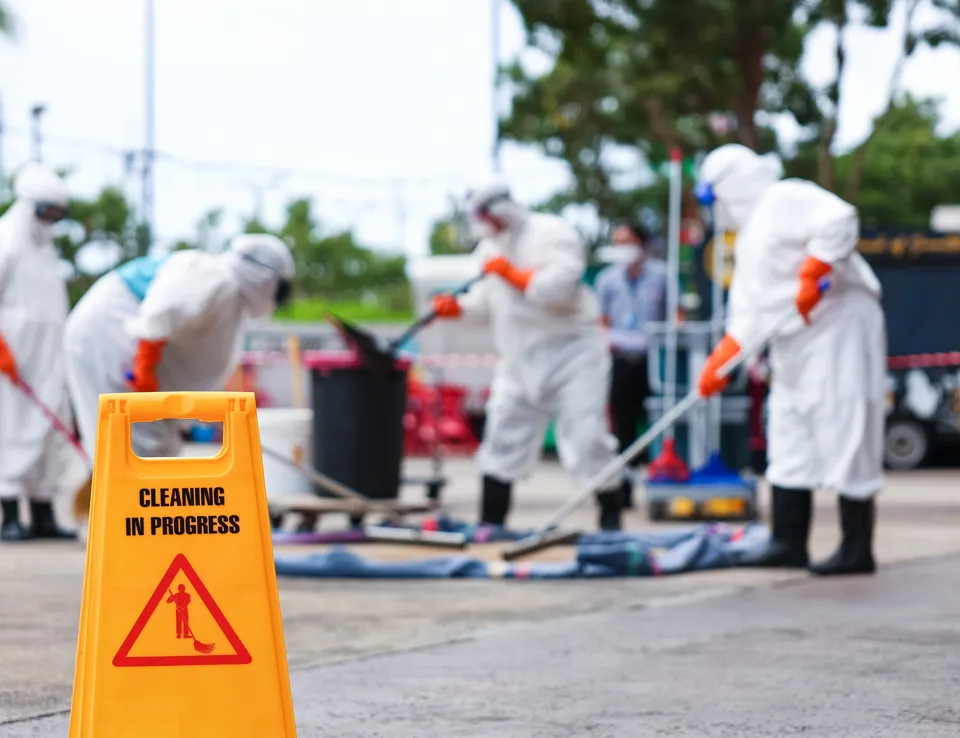Navigating chaos: minimising risk through a strategic response
In March 2025, just off the coast of East Yorkshire, UK, a cargo ship and an oil tanker collided posing significant threat to ecologically sensitive areas. The container ship was carrying numerous dangerous goods including 15 containers of sodium cyanide, a highly toxic substance that can release deadly hydrogen cyanide gas if containers or cargo were breached.
The oil tanker was transporting hundreds of thousands of barrels of Jet‑A1 aviation fuel which is volatile and toxic – inhalation, ingestion or skin contact can harm wildlife, marine creatures and the fumes pose risks to humans in the vicinity. Heavy ship fuel oil also poses risks to wildlife and can contaminate coastlines – in this scenario, vulnerable species such as puffins, razorbills, gannets, kittiwakes, seals, porpoises, oysters, seagrass beds and fish stocks were all at risk.
As the oil tanker was ruptured in the collision causing fires and the release of fuel into the sea, the emergency services attending the scene requested the support of Ricardo’s Chemical Emergency Response (ER) Team.
Ricardo’s Chemical Emergency Response team is available 24/7/365 to providing actionable chemical safety advice: from minor domestic spills to large-scale, complex emergencies.
Managing multi-product incidents
Upon notification of the incident in the North Sea, the team received the manifest of products on board the cargo vessel and were asked to identify any high-risk chemicals. Our specialists quickly assessed the hazards of each substance and conducted rapid research into potential chemical reactions that could elevate the risk to first responders.
Incidents involving multiple products present a significant challenge. These incidents require not only an understanding of the hazards of each individual product, but also a strong understanding of the potential reactions between products if two or more mix. The ER team advise on many incidents of this type, including:
- Consumer incidents involving incompatible household products, such as mixing anti-scale cleaners with bleach, which can release hazardous gases.
- Manufacturing site errors, providing advice in the event of an incorrect product being added to a process.
- Warehouse spills, where a spilled product may contaminate other stored products.
- Transport incidents, from small-scale HGV loads to major shipping events involving mixed dangerous goods.
Once clarity over the potential hazards is obtained, incident response advice and guidance is shared to minimise the impact of the incident, which may change priorities in the response plan where substances have interacted.
Structured, scalable response
While no two incidents are the same, the ER team follow well-established processes for large-scale emergencies. Identifying dangerous goods with the greatest potential to escalate risk – whether due to physical, toxicological, environmental properties or reactivity – is the first priority.
The team categorises products into hazard groups and ranks their inherent, reactivity and environmental risks as high, medium, or low:

Communicating risk clearly
Once hazards are identified, the next step is to communicate these in a way that on-scene teams, with little or no chemical knowledge, can act on quickly and safely. Ranking each product’s risk status as high, medium, or low allows response coordinators to prioritise actions and focus on the most critical threats.
Maintaining a ‘safety first’ approach ensures that the ER team fully brief on-scene responders on the anticipated behaviours of low, medium or high-risk chemicals involved in the incident as the stages of the response interventions progress. Advice is provided on the most appropriate and safety conscious way to clean up each of the chemicals involved, such as with sand or other absorbent materials, and personal safety advice, such as whether breathing apparatus should be worn.
Human factor
The extensive training programme the ER’s undertake expands on their existing chemical knowledge to the tried and tested emergency incident response protocols. It also includes training on the human factors: dealing with emergency incidents is highly stressful and can be emotional depending on the situation. Ricardo’s ER team are extensively trained on how to offer reassurance and provide clear instructions to anyone – be they an individual at home, or an emergency services team member with years of response experience. Each incident and each caller are entirely unique.
Our responders bring consistent expertise, regardless of the number of substances involved or the location. Our capabilities are continuously refined through training, protocol reviews and realistic drills, ensuring we’re ready to deliver critical support when it matters most.
Emergency Response: a strategic safety asset
Level 1 emergency response is a vital part of a robust safety strategy. It ensures that when incidents occur, the impact on people, the environment, assets, and reputation is minimised.
We encourage organisations across the chemical supply chain to consider how their emergency response arrangement would perform in a range of scenarios, for example:
- Do our response plans cover all geographies where our products are used or transported?
- Can we provide expert response advice across all transport modes (road, rail, sea) to minimise the impact of an incident?
- Are we prepared for complex incidents involving chemical reactions?
- Have we tested our plans through realistic exercises?
In emergency situations, every second counts. In fact, the first 20 minutes following an incident can be make or break in terms of impact. By ensuring emergency response plans incorporate expert support with deep technical knowledge and real-world experience can minimise the very real threats to your organisation following incidents.
Supply chain disruption. Disappointed customers. Damaged reputations with environmental liability cases. All issues which can cause lasting damage and extensive costs.
Minimise the risk with Ricardo’s best-in-class Chemical Emergency Response support - anytime, anywhere.









